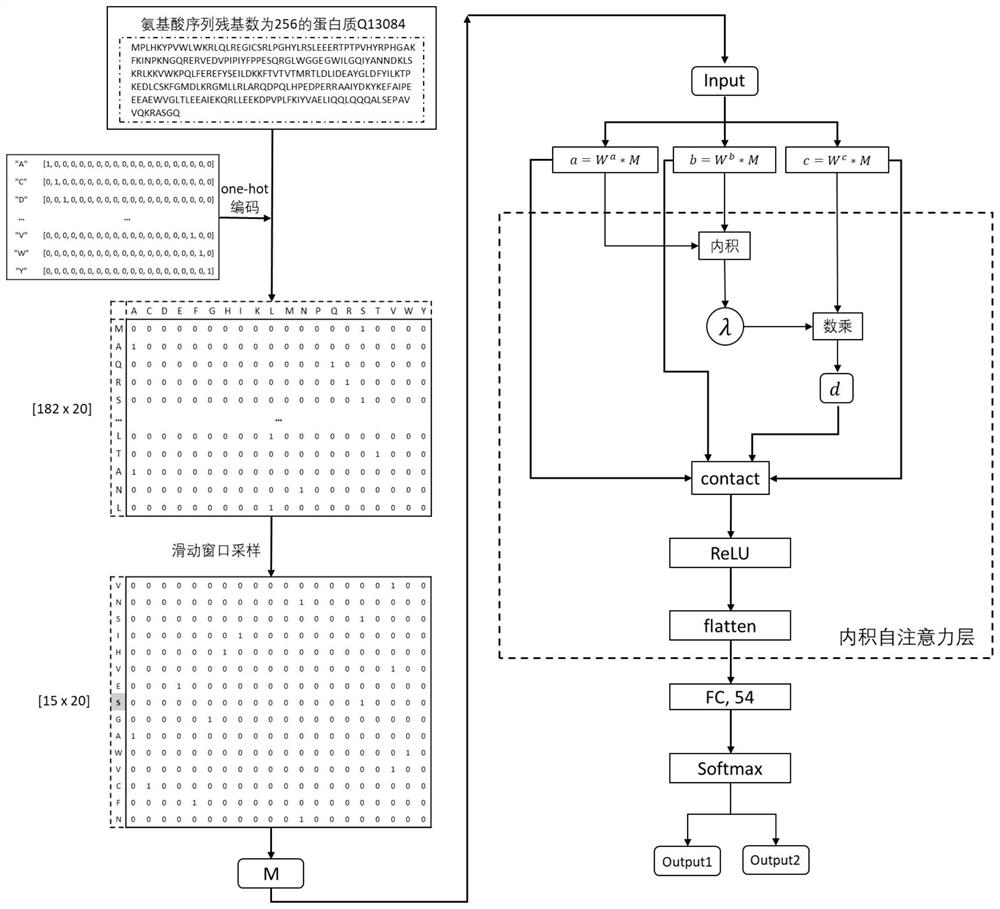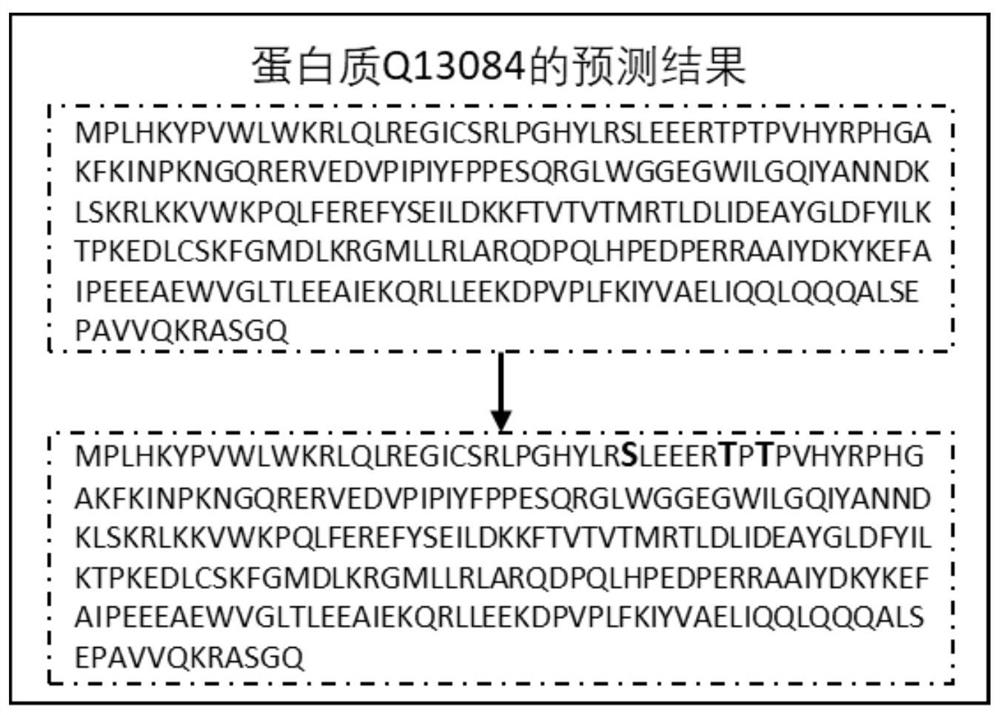Protein phosphorylation site prediction method based on inner product self-attention neural network
A prediction method and neural network technology, applied in neural learning methods, biological neural network models, neural architectures, etc., to achieve the effects of high prediction accuracy, guaranteed accuracy, and low computational cost
- Summary
- Abstract
- Description
- Claims
- Application Information
AI Technical Summary
Problems solved by technology
Method used
Image
Examples
Embodiment Construction
[0049] The present invention will be further described below in conjunction with the accompanying drawings.
[0050] refer to figure 1 and figure 2 , a protein phosphorylation site prediction method based on inner product self-attention neural network, comprising the following steps:
[0051] 1) Input a protein sequence whose number of amino acid residues is L to be predicted for phosphorylation site, denoted as S;
[0052] 2) Use the one-hot encoding method to digitally encode the 20 common amino acid types that make up the protein, as follows:
[0053] 'A': [1,0,0,0,0,0,0,0,0,0,0,0,0,0,0,0,0,0,0,0]
[0054] 'C': [0,1,0,0,0,0,0,0,0,0,0,0,0,0,0,0,0,0,0,0]
[0055] 'D': [0, 0, 1, 0, 0, 0, 0, 0, 0, 0, 0, 0, 0, 0, 0, 0, 0, 0, 0, 0]
[0056] 'E': [0,0,0,1,0,0,0,0,0,0,0,0,0,0,0,0,0,0,0,0]
[0057] 'F': [0,0,0,0,1,0,0,0,0,0,0,0,0,0,0,0,0,0,0,0]
[0058] 'G': [0,0,0,0,0,1,0,0,0,0,0,0,0,0,0,0,0,0,0,0]
[0059] 'H': [0,0,0,0,0,0,1,0,0,0,0,0,0,0,0,0,0,0,0,0]
[0060] 'I': [0,0...
PUM
 Login to View More
Login to View More Abstract
Description
Claims
Application Information
 Login to View More
Login to View More - R&D
- Intellectual Property
- Life Sciences
- Materials
- Tech Scout
- Unparalleled Data Quality
- Higher Quality Content
- 60% Fewer Hallucinations
Browse by: Latest US Patents, China's latest patents, Technical Efficacy Thesaurus, Application Domain, Technology Topic, Popular Technical Reports.
© 2025 PatSnap. All rights reserved.Legal|Privacy policy|Modern Slavery Act Transparency Statement|Sitemap|About US| Contact US: help@patsnap.com



